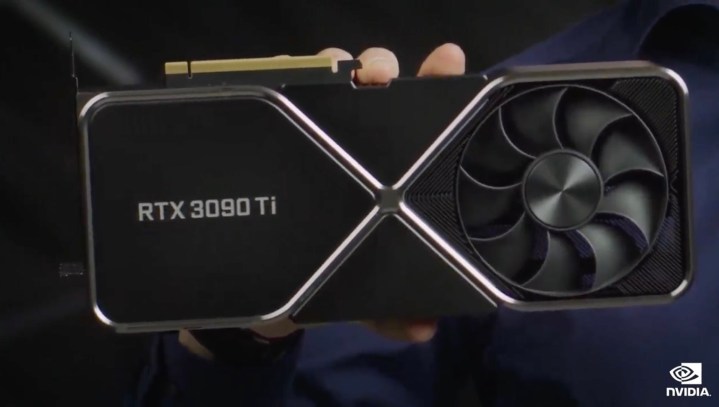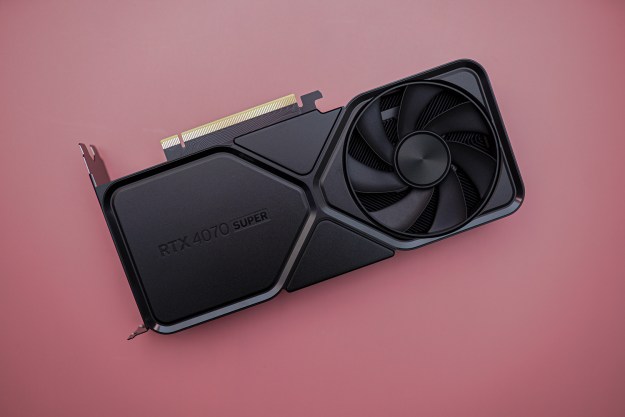Considering the fact that the GeForce RTX 3090 Ti will immediately become Nvidia’s new flagship graphics card, it’s a foregone conclusion that you’d have to pay a small fortune to acquire one. Thanks to several listings, we now have a better idea of exactly how much you’re going to have to pay for Nvidia’s monster GPU.
As initially reported by NotebookCheck, Momomo_us, a tipster known for his technology leaks, managed to get a sneak peek of a Canadian retailer’s listings for two variants of the GeForce RTX 3090 Ti.

In particular, the Asus RTX 3090 Ti TUF Gaming edition comes with a price tag of 4,649 Canadian dollars. While final prices in other regions may vary, that translates to $3,689, or 3,339 euros, and 2,801 British pounds.
Meanwhile, the Asus RTX 3090 Ti ROG Strix LC commands a higher price tag due to its liquid cooling component. When it becomes available, it’ll cost 5,239.93 Canadian dollars, which would be $4,158, 3,764 euros, and 3,157 British pounds.
It’s important to highlight that prices for the powerful GPU will be dependent on the market, model, and manufacturer. For example, in Switzerland, an online retailer reportedly revealed that the MSI GeForce RTX 3090 Ti Suprim X and RTX 3090 Ti Gaming X Trio variants will cost between $3,500 to $4,500. Furthermore, once other models with their own configurations materialize in the near future, prices will realistically exceed $6,000.
If the latter price does come to fruition, then the RTX 3090 Ti would immediately become the most expensive consumer graphics card in history. In any case, no matter what region you reside in, you’ll have to essentially pay the price of an average car if you want to equip your system with Nvidia’s latest product.
While many may question these exorbitant prices for a graphics card, there is a market for these boards. The enthusiastic segment has been eagerly awaiting the release of the RTX 3090 Ti ever since rumors began, and for good reason: It will be Nvidia’s first
These sorts of technical specifications have prompted Nvidia to label the RTX 3090 Ti a “monster of a GPU.”
Following a reported delay in its production, the RTX 3090 Ti is finally expected to become available next week on March 29. In fact, we should receive official confirmation of the release schedule this week — Nvidia’s Graphics Technology Conference (GTC) commences today, so it’s likely a launch date will be revealed at the event.
AMD’s answer to the 3090 Ti, the Radeon RX 6950XT, is set for its own release during April, which should result in some extremely interesting performance comparisons in the coming weeks. Well-known insider Moore’s Law is Dead even stated he believes the latter will be a “far better product” than Nvidia’s GPU.
As for the successor of the RTX 3090 Ti, the RTX 40-series is said to more than double the teraflops (TFLOPS) count of the former. As such, the 4090 Ti will inevitably replace its predecessor as the most expensive consumer graphics card ever once it hits store shelves.
Editors' Recommendations
- AMD’s canceled GPU could have crushed Nvidia
- Don’t buy the RTX 3060 in 2024
- Everything you need to know about buying a GPU in 2024
- 5 GPUs you should buy instead of the RTX 4070
- Nvidia DLSS is amazing, but only if you use it the right way




